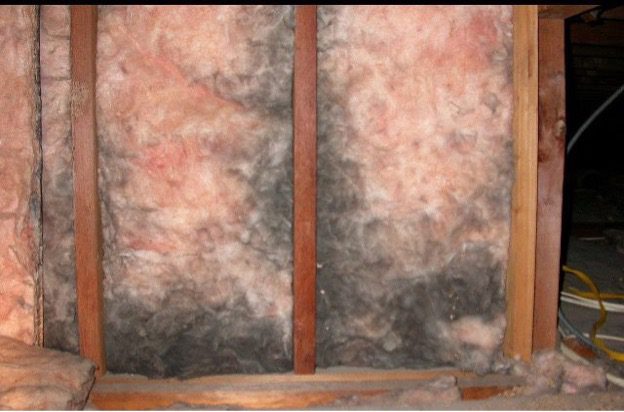How Insulation Prevents Mold Growth

Mold growth is a common concern for homeowners, especially in regions with fluctuating temperatures and high humidity levels. Left unchecked, mold can cause structural damage, reduce indoor air quality, and pose health risks. One of the most effective ways to combat mold is through proper insulation. At Koala Insulation of the Midsouth, we specialize in insulation solutions that help create a healthier, mold-resistant environment for your home.
Understanding Mold Growth
Mold thrives in environments where moisture, warmth, and organic material are present. Common areas for mold growth include basements, attics, crawl spaces, and around windows and pipes. The key contributors to mold growth are:
- Excess Moisture: From leaks, condensation, or high humidity.
- Poor Ventilation: Traps moisture inside.
- Temperature Fluctuations: Create condensation, a breeding ground for mold.
How Insulation Helps Prevent Mold Growth
- Moisture Control
Proper insulation acts as a barrier, reducing moisture accumulation. Materials like spray foam and rigid foam board have moisture-resistant properties that prevent water vapor from seeping into walls, ceilings, and floors. - Temperature Regulation
Insulation helps maintain consistent indoor temperatures, minimizing the risk of condensation on surfaces. Less condensation means fewer opportunities for mold to develop. - Air Sealing
Spray foam insulation, in particular, seals gaps and cracks where air and moisture can infiltrate. By eliminating these entry points, you reduce the chances of mold-friendly environments. - Improved Ventilation
While insulation controls moisture, proper ventilation ensures that any residual moisture is effectively expelled. Combining insulation with adequate airflow significantly reduces mold risks. - Condensation Reduction
Insulating cold surfaces, like pipes and exterior walls, prevents warm, humid air from condensing into water droplets—a common trigger for mold growth.
Best Insulation Types for Mold Prevention
- Spray Foam Insulation
- Benefits: Air-sealing capabilities, moisture-resistant, long-lasting.
- Ideal For: Attics, crawl spaces, basements, and walls.
- Rigid Foam Board Insulation
- Benefits: High moisture resistance, excellent thermal performance.
- Ideal For: Basement walls, foundations, and exterior applications.
- Fiberglass Insulation (With Vapor Barrier)
- Benefits: Affordable, widely used, effective when paired with vapor barriers.
- Ideal For: Walls, ceilings, and floors in less humid areas.
- Mineral Wool (Rock Wool) Insulation
- Benefits: Naturally moisture-resistant, fire-resistant, soundproofing properties.
- Ideal For: Basements, bathrooms, and exterior walls.
Key Areas to Insulate to Prevent Mold
- Attics: Poorly insulated attics can trap warm, moist air, leading to condensation and mold growth. Proper attic insulation and ventilation work together to prevent this.
- Basements and Crawl Spaces: These areas are prone to moisture issues due to their proximity to the ground. Insulating walls and floors with moisture-resistant materials reduces mold risk.
- Walls: Insulating exterior walls prevents temperature fluctuations that can cause condensation inside wall cavities.
- Floors: Especially in homes with crawl spaces, floor insulation prevents cold, damp air from rising into living areas.
- Around Windows and Doors: Proper insulation reduces drafts and condensation buildup around windows and doors.
Signs Your Home May Need Mold-Preventing Insulation
- Musty Odors: A strong, musty smell often indicates hidden mold.
- Visible Mold Growth: Dark spots on walls, ceilings, or floors.
- High Humidity Levels: Consistently above 60% indoors.
- Condensation: Frequent condensation on windows, pipes, or walls.
- Water Damage: Stains, peeling paint, or warped materials.
Preventive Measures Beyond Insulation
While insulation plays a critical role, combining it with other moisture control strategies offers the best protection:
- Proper Ventilation: Use exhaust fans in kitchens, bathrooms, and laundry areas.
- Dehumidifiers: Maintain indoor humidity between 30-50%.
- Gutter Maintenance: Ensure gutters direct water away from the foundation.
- Regular Inspections: Check for leaks in roofs, pipes, and around windows.
- Sealing Cracks: Caulk and seal gaps in walls, floors, and foundations.
Why Choose Koala Insulation of the Midsouth?
At Koala Insulation of the Midsouth, we understand the unique challenges of preventing mold in homes across the region. Our insulation experts are trained to identify moisture-prone areas and recommend the best solutions for long-term protection.
What Sets Us Apart:
- Expert Assessments: We evaluate your home’s insulation and identify areas at risk for mold growth.
- Customized Solutions: Tailored insulation plans based on your specific needs.
- High-Quality Materials: We use moisture-resistant, eco-friendly insulation products.
- Professional Installation: Ensures proper sealing and insulation for maximum effectiveness.
Get a Free Estimate Today!
Concerned about mold in your home? Call us at (901)-613-1421 or visit our website for a free estimate. Let Koala Insulation of the Midsouth help you create a healthier, mold-resistant environment with expert insulation solutions.
Find Your Location


Get a quote


